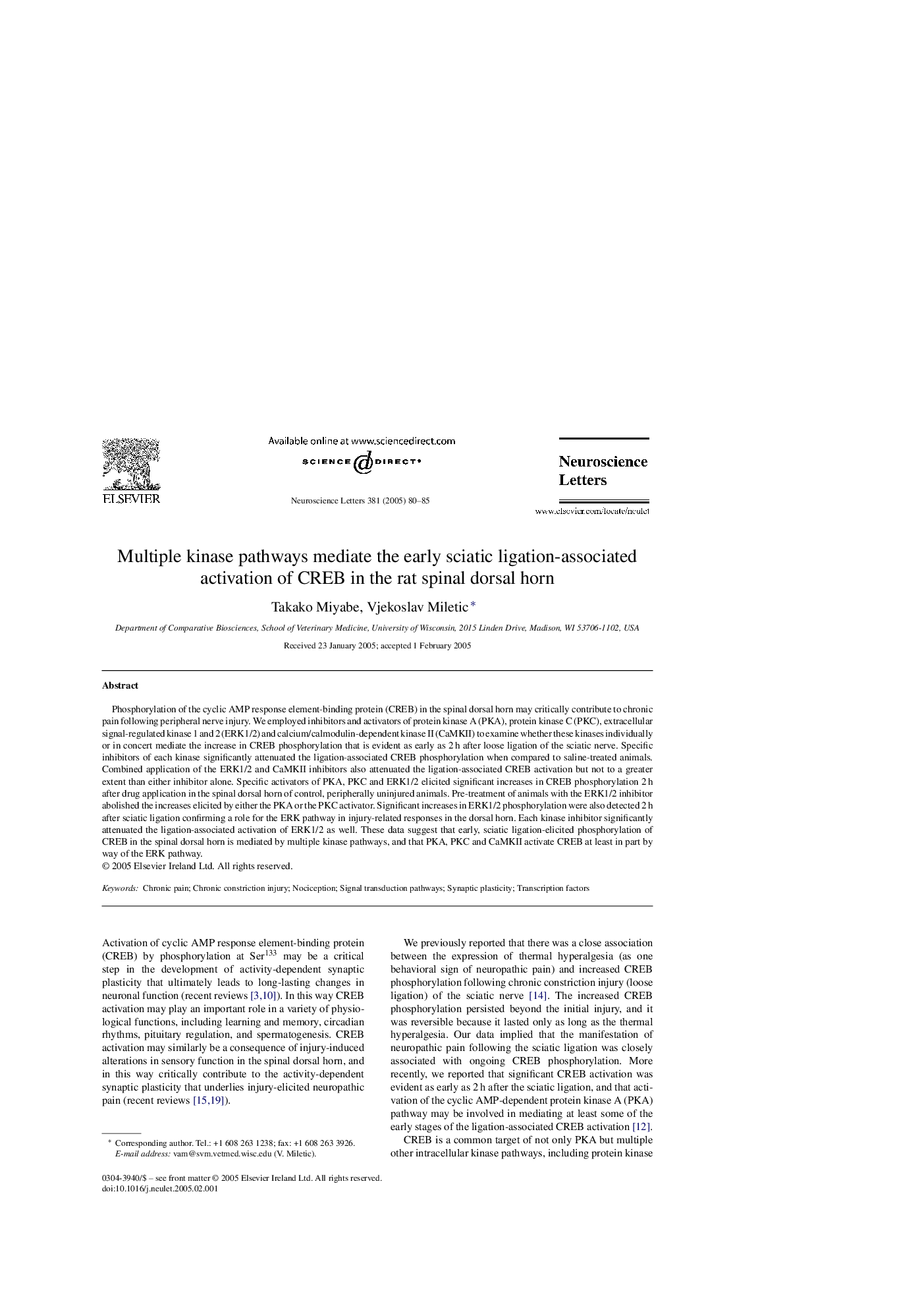| Article ID | Journal | Published Year | Pages | File Type |
|---|---|---|---|---|
| 9429678 | Neuroscience Letters | 2005 | 6 Pages |
Abstract
Phosphorylation of the cyclic AMP response element-binding protein (CREB) in the spinal dorsal horn may critically contribute to chronic pain following peripheral nerve injury. We employed inhibitors and activators of protein kinase A (PKA), protein kinase C (PKC), extracellular signal-regulated kinase 1 and 2 (ERK1/2) and calcium/calmodulin-dependent kinase II (CaMKII) to examine whether these kinases individually or in concert mediate the increase in CREB phosphorylation that is evident as early as 2Â h after loose ligation of the sciatic nerve. Specific inhibitors of each kinase significantly attenuated the ligation-associated CREB phosphorylation when compared to saline-treated animals. Combined application of the ERK1/2 and CaMKII inhibitors also attenuated the ligation-associated CREB activation but not to a greater extent than either inhibitor alone. Specific activators of PKA, PKC and ERK1/2 elicited significant increases in CREB phosphorylation 2Â h after drug application in the spinal dorsal horn of control, peripherally uninjured animals. Pre-treatment of animals with the ERK1/2 inhibitor abolished the increases elicited by either the PKA or the PKC activator. Significant increases in ERK1/2 phosphorylation were also detected 2Â h after sciatic ligation confirming a role for the ERK pathway in injury-related responses in the dorsal horn. Each kinase inhibitor significantly attenuated the ligation-associated activation of ERK1/2 as well. These data suggest that early, sciatic ligation-elicited phosphorylation of CREB in the spinal dorsal horn is mediated by multiple kinase pathways, and that PKA, PKC and CaMKII activate CREB at least in part by way of the ERK pathway.
Keywords
Related Topics
Life Sciences
Neuroscience
Neuroscience (General)
Authors
Takako Miyabe, Vjekoslav Miletic,
